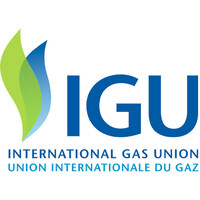The Energy Tightrope: Balancing Demand and Sustainability
August 29, 2024, 1:13 am
The world is on an energy tightrope. On one side, rising demand pulls us forward. On the other, underinvestment threatens to send us tumbling. The latest Global Gas Report (GGR) paints a stark picture of our energy future. It reveals a fragile equilibrium in global gas markets, where supply struggles to keep pace with surging demand. The stakes are high, and the clock is ticking.
In 2023, global gas demand rose by 1.5%. By the end of 2024, it’s expected to accelerate to 2.1%. Asia is the engine driving this growth, while North America and the Middle East lead in exports. But here’s the catch: if this trend continues without new production, we could face a 22% global supply shortfall by 2030. That’s a looming crisis.
Energy demand is not just a statistic; it’s a reality felt across continents. Developed and developing regions alike are consuming more energy. Coal burning hit record levels in 2023, solidifying its position as the largest source of global energy emissions. If we continue down this path, the ambitious 2030 targets for decarbonization will slip through our fingers like sand.
Europe, despite efforts to enhance efficiency, has seen energy demand grow. North America has surpassed pre-pandemic levels, driven by the transport sector and burgeoning AI data centers. Asia, particularly India and China, is experiencing a surge in industrial energy demand. Meanwhile, Africa’s energy needs are rising faster than in most regions, propelled by urban development. Yet, the continent still grapples with equitable electricity access, a challenge that remains significant in parts of South America as well.
The urgency of the situation cannot be overstated. To rein in greenhouse gas emissions and stabilize the global gas market, we must ramp up investments in natural gas supply. This includes scaling up biomethane, carbon capture and storage (CCS), and low-carbon hydrogen technologies. Natural gas offers a quick win, providing an opportunity to cut emissions from coal by 50% and from oil by 30% through cost-effective switching.
However, biomethane, a direct substitute for natural gas, currently represents only about 1% of the natural gas market. Its production is primarily concentrated in North America and Europe, but new hubs are emerging in China and India. The potential is vast, yet the current scale is far from sufficient. Similarly, CO2 capture technology is gaining traction but remains underdeveloped. Both biomethane and low-carbon hydrogen are critical for decarbonizing energy supply, especially in hard-to-abate sectors.
The report emphasizes the need for urgent investment and enabling policies. We must build the momentum for project proposals that can drive these technologies forward. The path to a sustainable energy future is not a straight line. It’s a winding road filled with obstacles, from geopolitical tensions to technological disruptions.
The International Gas Union (IGU) and Snam, in collaboration with Rystad Energy, are at the forefront of this conversation. They stress the importance of balancing rising energy demand with long-term sustainability goals. A diversified energy system is essential. Innovative solutions and flexible policies will be the compass guiding us through this uncertain landscape.
Natural gas is currently 30% of the fossil fuel mix. It’s cheaper and cleaner than oil and coal, with significantly lower emissions. As global LNG access expands, natural gas is poised to surpass coal by 2030 and oil by 2050. This transition is not just about numbers; it’s about people. It’s about improving living standards and ensuring energy access for all.
The energy transition is a unique challenge. It’s a journey marked by aspirations and hurdles. We must navigate this transformation with care. Natural gas and its infrastructure are critical for sustainable resiliency in the global energy system. New green and low-carbon molecules will play an essential role in achieving a just and technologically neutral transition.
The 2024 Global Gas Report serves as a wake-up call. It highlights the urgent need for action. The energy landscape is shifting, and we must adapt. The time for complacency is over. We need to invest in the future now. The choices we make today will shape the energy landscape of tomorrow.
In conclusion, the world stands at a crossroads. Rising energy demand and underinvestment threaten to derail our progress. The path to a sustainable energy future is fraught with challenges, but it is also filled with opportunities. By embracing innovative solutions and investing in clean technologies, we can navigate this tightrope. The future of energy depends on our actions today. Let’s not lose our balance.
In 2023, global gas demand rose by 1.5%. By the end of 2024, it’s expected to accelerate to 2.1%. Asia is the engine driving this growth, while North America and the Middle East lead in exports. But here’s the catch: if this trend continues without new production, we could face a 22% global supply shortfall by 2030. That’s a looming crisis.
Energy demand is not just a statistic; it’s a reality felt across continents. Developed and developing regions alike are consuming more energy. Coal burning hit record levels in 2023, solidifying its position as the largest source of global energy emissions. If we continue down this path, the ambitious 2030 targets for decarbonization will slip through our fingers like sand.
Europe, despite efforts to enhance efficiency, has seen energy demand grow. North America has surpassed pre-pandemic levels, driven by the transport sector and burgeoning AI data centers. Asia, particularly India and China, is experiencing a surge in industrial energy demand. Meanwhile, Africa’s energy needs are rising faster than in most regions, propelled by urban development. Yet, the continent still grapples with equitable electricity access, a challenge that remains significant in parts of South America as well.
The urgency of the situation cannot be overstated. To rein in greenhouse gas emissions and stabilize the global gas market, we must ramp up investments in natural gas supply. This includes scaling up biomethane, carbon capture and storage (CCS), and low-carbon hydrogen technologies. Natural gas offers a quick win, providing an opportunity to cut emissions from coal by 50% and from oil by 30% through cost-effective switching.
However, biomethane, a direct substitute for natural gas, currently represents only about 1% of the natural gas market. Its production is primarily concentrated in North America and Europe, but new hubs are emerging in China and India. The potential is vast, yet the current scale is far from sufficient. Similarly, CO2 capture technology is gaining traction but remains underdeveloped. Both biomethane and low-carbon hydrogen are critical for decarbonizing energy supply, especially in hard-to-abate sectors.
The report emphasizes the need for urgent investment and enabling policies. We must build the momentum for project proposals that can drive these technologies forward. The path to a sustainable energy future is not a straight line. It’s a winding road filled with obstacles, from geopolitical tensions to technological disruptions.
The International Gas Union (IGU) and Snam, in collaboration with Rystad Energy, are at the forefront of this conversation. They stress the importance of balancing rising energy demand with long-term sustainability goals. A diversified energy system is essential. Innovative solutions and flexible policies will be the compass guiding us through this uncertain landscape.
Natural gas is currently 30% of the fossil fuel mix. It’s cheaper and cleaner than oil and coal, with significantly lower emissions. As global LNG access expands, natural gas is poised to surpass coal by 2030 and oil by 2050. This transition is not just about numbers; it’s about people. It’s about improving living standards and ensuring energy access for all.
The energy transition is a unique challenge. It’s a journey marked by aspirations and hurdles. We must navigate this transformation with care. Natural gas and its infrastructure are critical for sustainable resiliency in the global energy system. New green and low-carbon molecules will play an essential role in achieving a just and technologically neutral transition.
The 2024 Global Gas Report serves as a wake-up call. It highlights the urgent need for action. The energy landscape is shifting, and we must adapt. The time for complacency is over. We need to invest in the future now. The choices we make today will shape the energy landscape of tomorrow.
In conclusion, the world stands at a crossroads. Rising energy demand and underinvestment threaten to derail our progress. The path to a sustainable energy future is fraught with challenges, but it is also filled with opportunities. By embracing innovative solutions and investing in clean technologies, we can navigate this tightrope. The future of energy depends on our actions today. Let’s not lose our balance.

